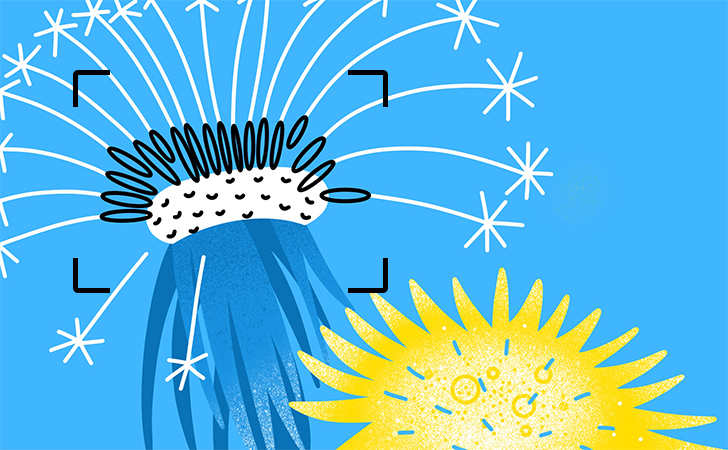We use cookies to improve the services we offer you. By continuing to browse this site, you consent to keep them in accordance with our Privacy Policy.
×We use cookies to improve the services we offer you. By continuing to browse this site, you consent to keep them in accordance with our Privacy Policy.
× 3,402
3,402
 5 min
5 min

Macro photography is basically extreme close-up photography. Or so Wikipedia says, and that’s what most people think. Well, it’s almost true, except for the fact that not all close-up shots are macro. But all macro shots are indeed close-ups.
So, what is the difference? Why do we love macro photography, and how can we actually do it?
A close-up image can be captured with any device. You only have to approach the subject as close as you can, so that it occupies most of the shot. It doesn’t matter if you’re using a professional lens or your smartphone camera – you’ll still get a close-up shot.
True macro photography can only be done with a special lens. Professional photographers may argue that you can only take macro pictures with a dedicated macro lens. However, the macro setting on your regular camera applied to a standard 50-60 mm lens will do just fine, too. The real difference is the quality of the shot and the amount of detail you can see in it.
The general genre-specific characteristic of macro photography is that it enables you to see things the human eye cannot. It is a unique form of photography that makes the tiny subjects in the shot look life-sized or even larger. This approach is also used for bringing out details in individual still objects such as food, jewelry, etc.
Most digital cameras and DSLRs have a built-in macro mode. You also have the option to buy close-up filters, which are designed to allow closer focus. They come in a range of strengths and are attached to the front of your lens. Remember that increasing the amount of glass between the camera and the source of light can lessen the quality of the image, but you will still end up with decent pictures.
Another option is to buy an extension tube, which is still cheaper than a macro lens. It increases the distance between the lens and the sensor, which in turn makes the object in focus look larger and sharper in detail.
For amateur macro photography, these options would do, but for truly captivating extreme close-up images, you need to invest in decent lenses. You will need 1:1 magnification or higher, so look for specialized macro lenses. They are fairly pricy, so it’s probably worth buying them only if you are genuinely interested in the genre.
Always use a tripod or an alternative stabilizing system, as you want your image to be as sharp and clear as possible.
Macro photography works wonders when it comes to shooting wildlife, insects, plants, and inanimate objects like jewelry, accessories, food products, and much more. Remember to choose something that would make sense to viewers so they will understand what’s in the shot and enjoy looking at the details.
Place your subject against the desired background. Adjust your perspective so that nothing clashes with your main subject. Focus on it and blur the background as much as you wish. Keep experimenting with the balance between the sharpness of the subject and the depth of the field – there is no right or wrong way to do it, as everything depends on the concept of your shot.
Picking the right point of focus is also important, as highlighting different parts of your subject will make your composition look completely different. Switch your camera to manual mode to make sure you get what you want.
Whenever possible, it’s best to take advantage of natural daylight. Diffusers and reflectors will help you make the most out of it. Artificial lighting will work fine, too, as long as you use professional macro flash or a whole sequence of synchronized flashes. Built-in options can occasionally do the job, too, but they tend to make the shots look flat, so it is not advisable to use them.
No matter how good your lenses are, you might still want to play around with the depths of colors, the contrasts, the highlights, and so on. Sometimes an imperfect shot can look better with a subtle filter that will compensate for the incorrect lighting. In other cases, you will need to do a bit of work to remove certain details of the shot to make your composition more balanced. To do all of this, you will need a handy program such as Movavi Photo Editor, which will help you finish off your macro photography in minutes. To showcase your best shots, try combining them into animated sequences with the help of Movavi Slideshow Maker.
Remember that mastering macro shots will take your time and patience, but hopefully, the result will be worth it. This genre lets you see things from a new angle, which in turn will lead you to new fascinating discoveries in the world of photography.